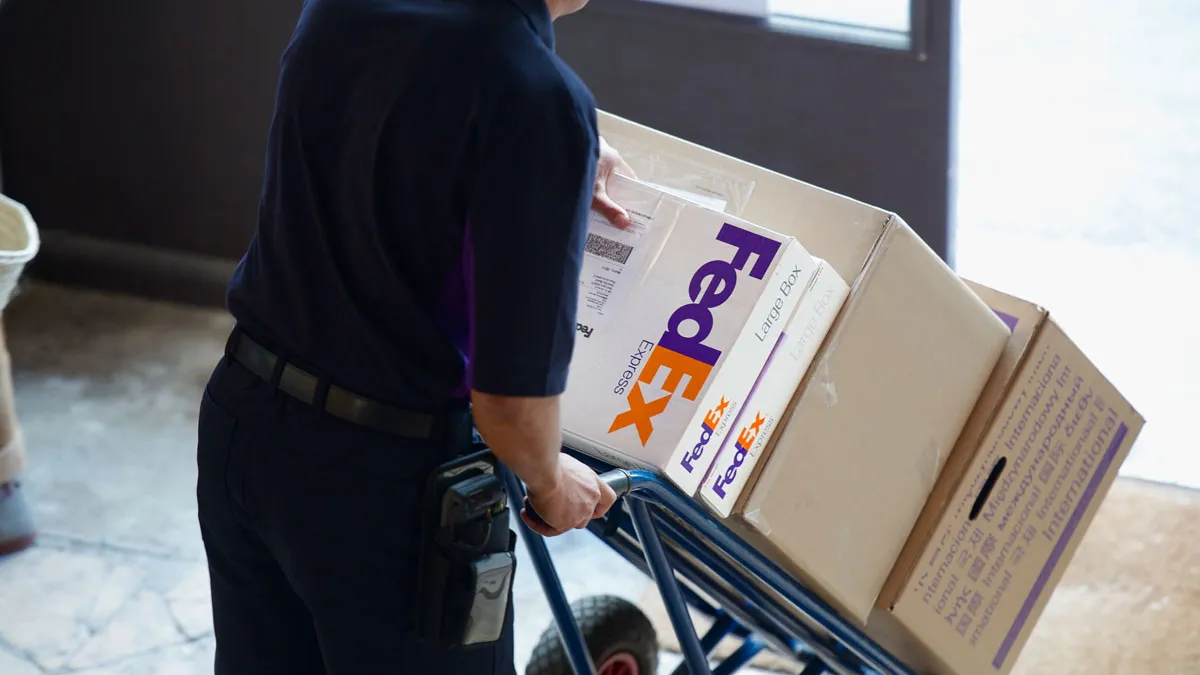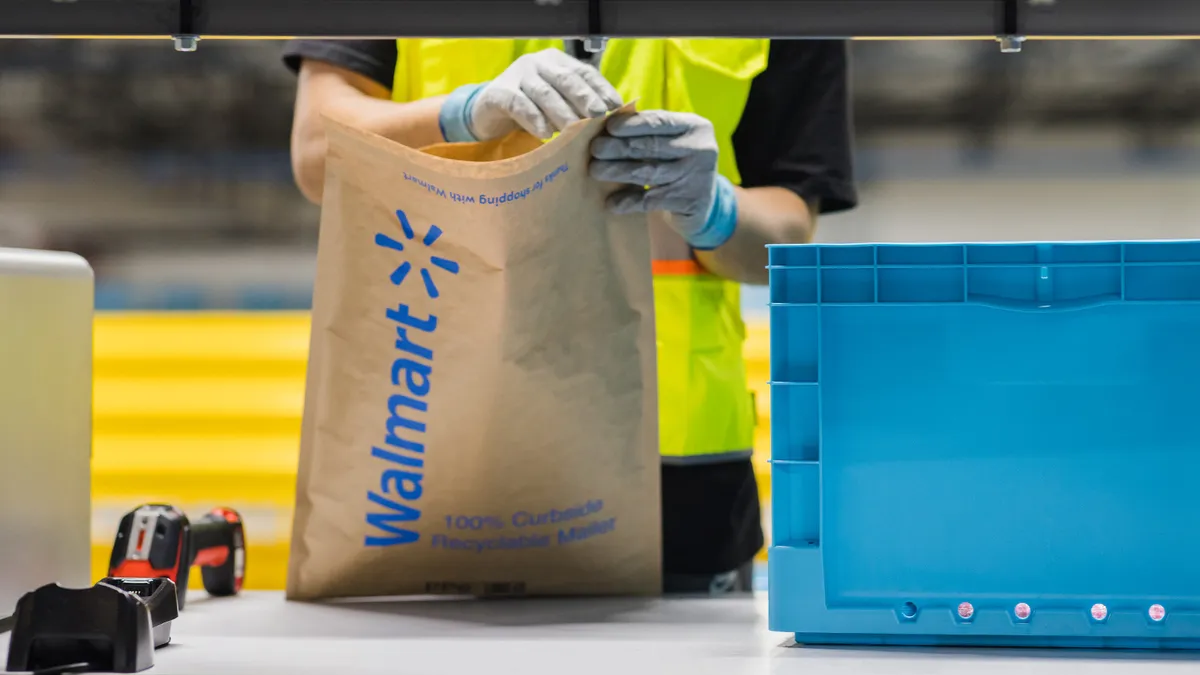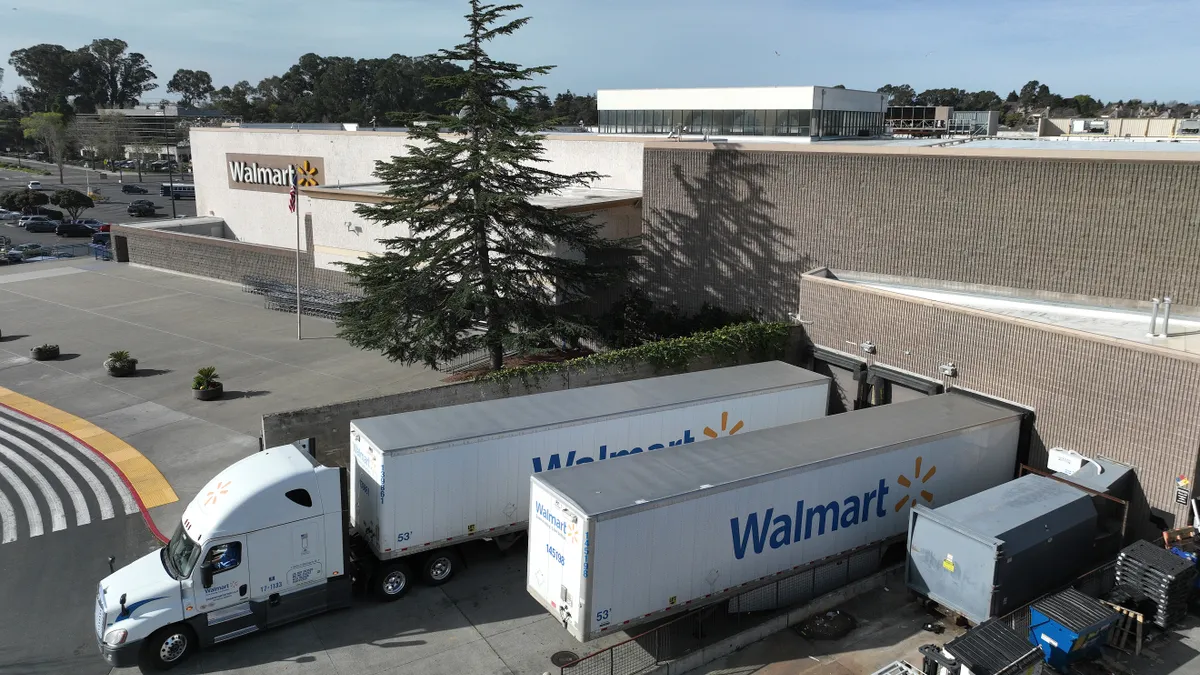Editor's Note: This article is part of a series on the Amazon effect on logistics. All stories in this series can be found here.
Amazon has been a game changing company in more ways than one. Free two-day shipping is a prime example: Retailers are realizing they must get on board or get left behind, but covering these costs and storing products in close proximity to consumers means tweaking logistics.
In 2015, almost 60% of online transactions included free shipping, according to the National Retail Federation.
“Any retailer who still is holding on to the past, that shipping isn’t free for me so I can’t offer free shipping, will find themselves not being relevant to the retail world,” said Satish Jindel, president of ShipMatrix, a shipping operations consulting company.
How Amazon does it
Retailers are competing against Amazon, a company willing to lose vast sums of money from shipping, to continue its growth.
A GeekWire analysis showed that Amazon lost $7.2 billion from shipping last year, the difference between Amazon’s shipping cost and what they charged for it. They made up for that loss through cloud computing services sales, with a 2016 corporate profit of $2.4 billion.
While shipping is costly for Amazon, the company is reducing its transportation expenses on a per package and per order basis every quarter of every year, said Jindel.
Amazon lost $7.2 billion from shipping last year, the difference between Amazon’s shipping cost and what they charged for it.

Supply Chain Dive
Though lowering the cost of delivery, they’re still charging the customer in some way, partly by adjusting their product prices on a real-time basis, based on supply, demand and the buyer’s habits, just like an airline. Customers don’t realize they may be paying more for their goods.
“You don’t always get the lowest price on Amazon, but you get the best value,” Jindel said. They’re able to do this because they’ve been building out their network and reducing delivery costs over the years. They have most of the products that people want, an estimated 90%, he said, and they’re warehoused within 90 miles of each customer. “They lower shipping prices because they’re moving it the shortest distance.”
Determining shipping costs
When talking about shipping, it’s easy to get caught up in talk about fulfillment as well. Buyers see it as one charge, “shipping and handling” in their checkout price.
Yet, fulfillment comes with its own set of supply chain issues and are a big part of shipping costs overall. Fulfillment is possessing the product and putting it in the box. Once it’s given to a company for transportation, that’s shipping.
Shipping fees alone are $2.50 minimum, rising to $3.50 - $5 depending on the shipping distance and the cube size, said Jindel. A 12” cubed package will cost more than one that’s 4” cubed, and it’s cheaper to ship 100 miles versus 500, he said.
Walmart is currently offering free shipping for some $35+ orders. Below that cost, they charge $5.99 for shipping. Knowing how large Walmart is, said Jindel, and that the fee covers both fulfillment and shipping, $5.99 is the minimum any retailer can spend and possibly break even. “If you break even in shipping charges, you still retain the profit margin on the product,” Jindel said.
When to offer free shipping
With free shipping, there’s no correlation between what’s charged for shipping and the actual cost. The retailer makes the decision to offer it based on a business strategy, which might be building the costs into the product price, increasing the number of sales to qualify or another tactic.
If a company requires a specific minimum for free shipping, 90% of shoppers will take an action to qualify for that, said Carl Asmus, senior vice president of e-commerce at FedEx. The retailer treats it as a promotional cost, and the buyer often spends more money for that order. More than half the shoppers will trade cheaper shipping for longer transit time. Retailers can use this customer data to tweak shipping offers.
"If you break even in shipping charges, you still retain the profit margin on the product."

Satish Jindel
President, ShipMatrix
But the retailer must understand the economics of their business to decide at what point free shipping pays off, while making money as an entity and returning shareholder value.
For Alpha Industries, a military-inspired fashion retailer, the topic of free shipping is frequently discussed internally and at conferences, said Stephanie Cohen, Alpha’s ecommerce marking manager.
Cohen said their model is promotionally-based, offering a discount coupled with free shipping around certain holidays. While they have not offered free shipping across the board, “if a consumer is really seeking free shipping, there’s a way for them to get it,” she said. Between coupon sites, discounts for newsletter subscribers and display ads with free shipping codes, Cohen feels they’re serving their customers while still maintaining Alpha’s margins.
How shippers can lower carrier prices
Free shipping isn’t really free, of course. Retailers still pay carriers for it, and the carriers are getting busier by the year.
After all, e-commerce includes residential deliveries as well as B2B deliveries. “The purchasing agent [at a large corporation] is buying digitally just as much as any shopper would,” said Asmus. “The transaction happens the same way for an individual shopper.”
However, as carriers see a steady increase in last-mile delivery — now 40% of all FedEx’s U.S. deliveries go to residences — rates are unlikely to decrease. Regardless, there are several ways retailers can reduce transportation costs:
- Offer a range of shipping options: For Alpha, that means offering customers several shipping options, including ground, two day and overnight shipping. “On average, the customer pays a shipping fee,” she said, though they’ve negotiated competitive rates with UPS, and continue negotiating new rates as the ecommerce business grows.
- Drop off at access point: Shippers may charge less for recipients to pick up their packages at a central point, like the retailer’s store, as it’s less expensive to deliver more packages to one location. “At that point, they’ve become the last mile delivery,” said Sean Flaherty, senior director of global retail strategy at UPS. That can have a positive impact on the retailer, who may get additional sales from the customer at pick-up.
- Limiting the travel distance: An item traveling from one coast to the other will cost more than from two adjoining states. Some companies choose to use regional fulfillment centers to lower shipping costs. Retailers are experimenting with using their brick and mortar stores as fulfillment centers, versus warehouses, so the packages travel shorter distances.
- Change the box size: Small or medium size merchants buying cardboard boxes may only need 20, so they buy the size in the middle which may be bigger than they need. “We can design the packaging for them to buy the appropriate packaging size, to dramatically decrease transportation size,” Asmus said.
Carriers don’t have set fee sheets for retailers, Flaherty said. “We work with them based on the experience they want to provide, understanding how we can fulfill that experience and charge them rates in accordance with that.”















